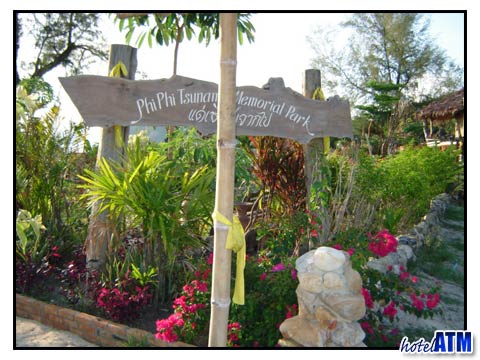Phi Phi sea conditions
|
Phi Phi Island Overview | Sea conditions at Koh Phi Phi
Phi Phi sea conditions vary greatly throughout the year and do have an effect on the diving, the tours and ferries between the islands. The sea is at an average and gorgeous 29 degrees C all year and is perfect for water sports but this is only part of story. Phi Phi sea conditions are dominated by the weather during the different seasons. The Phi Phi Island is characterized by tropical weather with dry hot weather in high season and windier and humid air in low season. In high season (November 1st until April 30th) the Phi Phi sea conditions are flat with the dominant wind coming from the mainland or North east. In low season the wet wind comes from the Indian Ocean which has a very large 'fetch' and so the potential for larger waves. Phi Phi sea conditions are also effected by the 3 m tide that pushes water up into the Phang Nga Bay and out again in the cyclical rhythm of nature. Larger spring tides will be stronger and these happen during the full moon. Phi Phi sea conditions for divingPhi Phi sea conditions are a key concern for divers as it can effect most of the dive sites and the pleasure to be had. Along with the sea surface visibility is the key component of the total conditions. Visibility is often 12-15m around Phi Phi Island and on good days up to 20 meters. On the more remote reefs like Phi Phi Hin Daeng or Koh Ha visibility is often 40 m or more as these outcrops are far from land and any fresh water runoff. Hin Daeng diving requires a 45 minute speedboat drive due south of Phi Phi and requires excellent sea conditions. Strong tides will pick up more sediment in the sea and so it is better to dive the tides away from the full moon as they have better visibility and also better to dive the tides away from promontories. Algae Blooms can occur at any time but often appear after rain as new nutrients are washed off land into the sea. The amount of sun light will effect algae growth. These algae blooms appear at any time of the year and can visibility down by 30%-50%. Phi Phi sea conditions in low seasonA further note on Phi Phi sea conditions in low season. Phi Phi weather can really make a turbulent sea state so it is good to check out the weather pattern in advance. The low season months of May, July, August and October can have high season like weather but the June and September will be more monsoonal, wet and windy. During windy days the sea condition is flat under the cliffs of Tonsai Bay and on the eastern side of Phi Phi Ley. Phi Phi sea conditions and the toursThe Phi Phi tours go in all Phi Phi sea conditions as the tall cliffs and mountains leave half of the islands in the 'lee' of the land. The coral reefs at Loh Samah, Pi Ley and Runtee bay are some of the prettiest. In low season these reefs are quiet and the atmosphere enchanting. In low season the tours from the mainland of Phuket and Krabi can be uncomfortable if the wrong crossing to Phi Phi is chosen. The large boat in the Sea Angel Cruise from Phuket might be a better tour than the Phuket Phi Phi tour by Speedboat if there are waves. Phi Phi sea conditions and the ferriesPhi Phi sea conditions don't effect the ferry crossing from Phuket or Krabi to Phi Phi as they used to. Now (2012)the ferries are twice as large as they were in 1995 ensuring good crossings even in waves. However if in doubt the low season month ferries are better taken from west to east. This means it is better to take the Phuket to Phi Phi direction than the Phi Phi to Phuket. Similarly it is better to do Phi Phi to Krabi rather than Krabi to Phi Phi.
|
|
|||||||||||










